Filipino dance is a powerful tool for political protest. Traditional dances like tinikling have been used to subtly convey dissent, as seen during the Marcos regime. For example, the dance's quick footwork and rhythmic bamboo pole tapping were used to symbolize resistance against the government.
Modern dance forms have also been used to spread protest messages. Budots, a popular dance challenge, has been used to virally spread messages against government policies and social issues. Additionally, dance battles in barangays (local communities) have been used to build community and challenge government policies.
Hip-hop, infused with traditional styles, tackles both colonial legacies and contemporary issues. For instance, Filipino hip-hop groups have used their music and dance to address issues such as poverty, inequality, and the drug war. Performances have depicted the suffering caused by the drug war, making dance a potent form of both online and offline mobilization.
Dance: A Protesting Tool
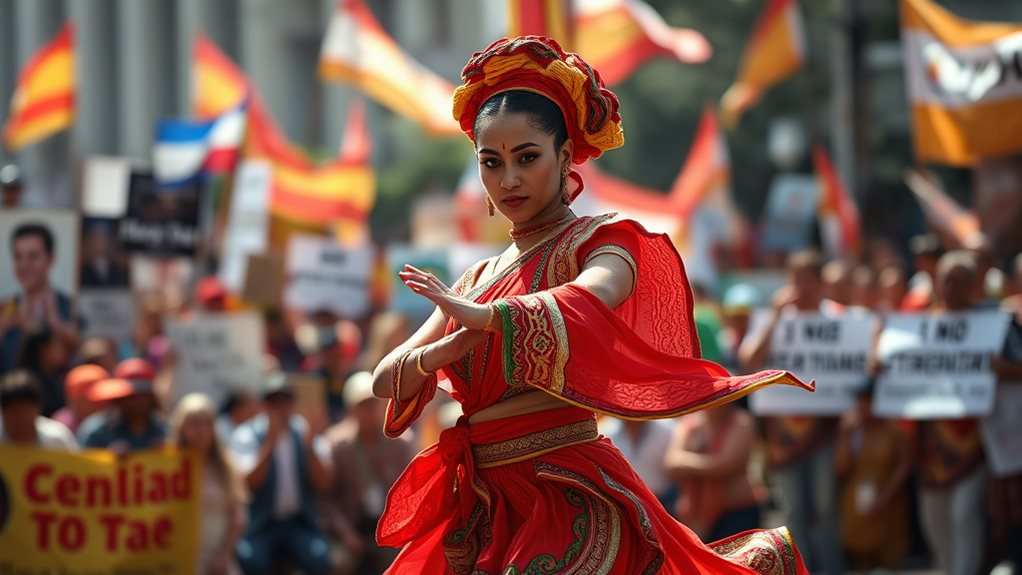
Dance has been a powerful tool for political protest in the Philippines, combining traditional cultural practices with contemporary artistic expressions.
In the Philippines, traditional dances like tinikling and pangalay have become symbols of unity during demonstrations, conveying cultural significance and dissent. During the Marcos regime, dance performances subtly expressed dissent, showcasing the artistry of dance activism.
Dance is a potent language that conveys messages beyond mere entertainment.
The Burung Talo, a traditional dance, mirrors the struggle against oppression through its hawk-and-cat battle. This isn't just a performance; it's an active mode of resistance. The community's active participation amplifies the message, creating a shared experience and strengthening collective action.
Modern dance groups have evolved to tackle contemporary issues.
The Baguio Street Dance Community, for example, uses street dance performances to address issues like climate change and social justice. These thematic performances are carefully crafted, with each movement designed to provoke thought and inspire action.
Collaborations between artists and community members forge a powerful alliance to advocate for a better future, transforming dance into a catalyst for social change.
Dance as Political Force
Filipino dance functions as a political force in three distinct ways: resistance, commentary, and mobilization.
As a form of resistance, dance challenges oppressive narratives and policies. In protests against the government's violent drug war, dance performances powerfully depict the suffering inflicted by extrajudicial killings. Physical cues and dramatic gestures convey a collective horror, and audience engagement underscores the protest's impact.
Similarly, hip-hop competitions in Manila's barangays become platforms for resistance against dominant narratives, fostering hope and collectivity among marginalized communities.
As a cultural and historical commentary, dance navigates complex legacies. The incorporation of Black dance forms into contemporary protests highlights the complex legacies of colonialism and neoliberalism. Traditional dances like pangalay and tinikling are recontextualized, drawing parallels between historical activism and present-day struggles.
The use of dance fosters a shared sense of identity and shapes movement identity.
As a popular movement, dance mobilizes both online and offline audiences. The Budots craze, a testament to dance's mobilizing power, spread nationally and online. Its use in political campaigns and its viral nature showcase its capacity to reach wide audiences, blurring the lines between entertainment and political engagement.
Dance shapes both offline and online spaces, constructing a fluid dance activism and a powerful movement identity.
Addressing Local Issues
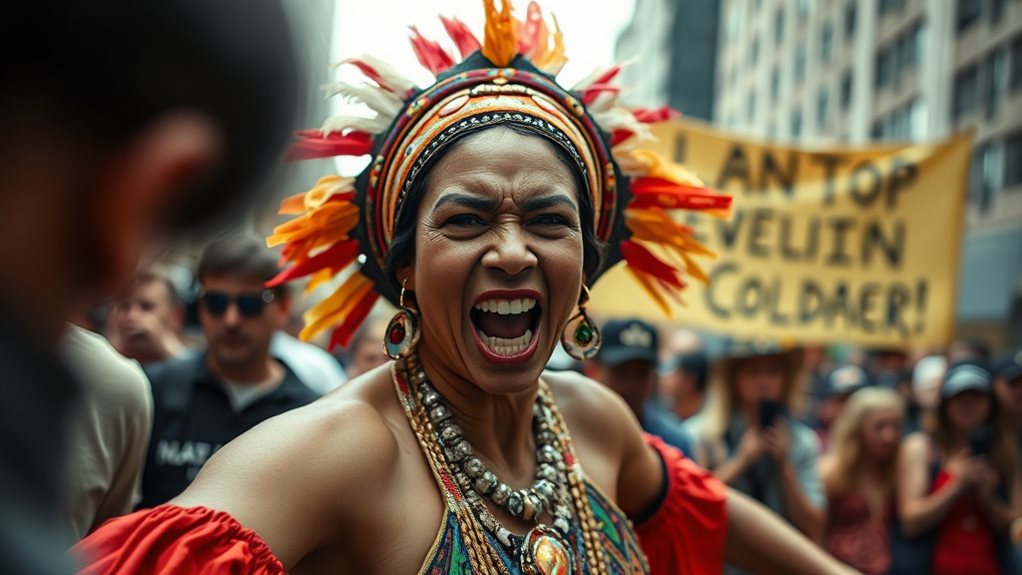
Filipino dance has the power to address local issues beyond national narratives. Dance crews have used performances to protest the drug war, mirroring the brutality of extrajudicial killings. These performances often incorporate banners with messages like "STOP EXTRAJUDICIAL KILLINGS" to raise awareness about the issue. The dancers' use of their bodies to convey the severity of the problem makes the issue more relatable and personal.
In another example, the Baguio Street Dance Community uses dance to promote social cohesion. They organize dance battles, choreography competitions, and busking performances to engage with the community and foster a sense of peace and belonging. By using hip-hop, krump, popping, and breaking, they're able to bring people together and work towards a more just and equitable society.
Dance can also be used to tackle broader social issues like climate change and sustainability****. The "Freedom in Motion" event is an example of this, where dance performances, workshops, and presentations come together to inspire action and dialogue within the community.
This event demonstrates the versatility of dance in local activism, showing how it can be used to address specific issues in innovative ways.
Global Concerns in Dance
Filipino Dance Engages with Global Concerns****
With globalization, Filipino dance is no longer limited to local issues. It now addresses global concerns, reflecting the country's unique history and its participation in the world. Dance activism tackles human rights violations**, such as extrajudicial killings**, through powerful performances that depict the victims' suffering.
For example, performances may use fake blood, uniformed figures, and banners reading "STOP EXTRAJUDICIAL KILLINGS" to raise awareness about these issues.
Influence of Colonialism and Black Dance****
Filipino dance is also influenced by colonialism, which has led to an engagement with Black dance and hip-hop. This intermingling creates a complex dialogue around racial and colonial histories, expressed through corporeal orature and performative euphemism within these dance forms.
Dance for Environmental and Social Justice****
Dance is used as a tool for environmental and social justice. Events like "Freedom in Motion" showcase the intersection of dance and activism, addressing issues such as:
- Climate change: performances highlight the importance of sustainability and reducing carbon footprint.
- Gender issues: dances raise awareness about gender equality and challenge gender stereotypes.
- Social justice: performances advocate for human rights and dignity for all.
These performances aren't just artistic expressions; they're calls to action, fostering civic engagement and advocating for sustainability.
Traditional Dances as Symbols of Resilience
Traditional dances like tinikling aren't just used for cultural celebration; they're also potent symbols of resilience against oppression****.
Parody videos and cultural performances become platforms for marginalized voices, drawing parallels between historical and contemporary struggles. These forms of dance activism critique power structures through embodied expression, offering a rich tapestry of global concerns woven into Filipino dance.
Community Dance Engagements
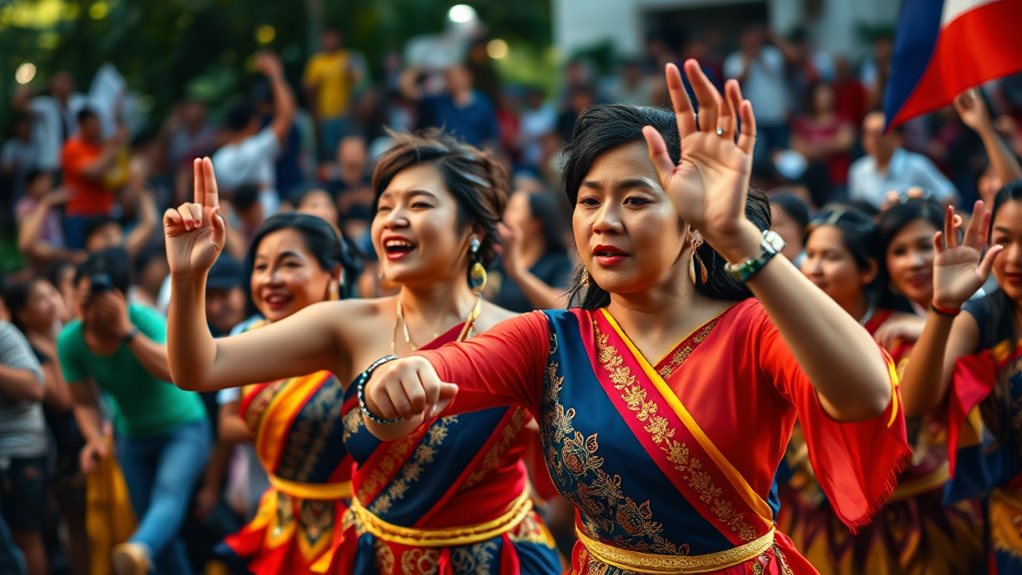
Community Dance Engagements in the Philippines
Community dance in the Philippines extends beyond formal performances, integrating dance activism into everyday life and fostering engaged cultural production. Dance becomes a potent tool for political expression in community gatherings, transforming everyday spaces into vibrant sites of protest and resistance.
Barangay Dance Competitions
In Manila, barangay dance competitions showcase hip-hop as a tool for resistance against government policies. These events foster a strong sense of collectivity and community, countering dominant narratives with powerful visuals of protest.
Community Dance Examples
| Dance Style | Community Context | Political Message | Impact |
|---|---|---|---|
| Hip-hop in Barangays | Manila barangay dance competitions | Resistance to government policies | Fosters community, collective action |
| Street Dance | Baguio Street Dance Community | Peace, love, community, diversity | Connects people, addresses social issues |
| Traditional Dances | Cultural shows incorporating skits and parodies | Critique of past and present regimes | Amplifies silenced voices |
| Budots | Viral dance craze, festivals, political events | Variable, depending on context | Deep cultural penetration, parody potential |
The Baguio Street Dance Community
The Baguio Street Dance Community promotes peace and community values through dance battles, choreography competitions, and busking. Traditional dances like tinikling are reappropriated to critique historical and contemporary power structures.
Budots: A Viral Dance Craze
The seemingly apolitical Budots dance craze finds itself embedded in political campaigns and parodies, highlighting the pervasive influence of dance in everyday Philippine life.
Collaborative Dance Projects
Collaborative Dance Projects in the Philippines Foster Social Change****
Collaborative dance projects in the Philippines utilize dance as a tool for social and political commentary, extending beyond individual expression to encompass collective action and social change.
Community Engagement and Social Commentary****
These projects involve community creativity through participatory dance workshops, such as "Freedom in Motion," a multi-day festival.
These workshops focus on processing complex themes like climate change, gender inequality, and social justice through movement. Performances often incorporate historical narratives, weaving together audio clips from Marcos regime survivors with contemporary choreography, creating a powerful storytelling experience.
Collective Expression and Geographical Boundaries****
This collective expression transcends geographical boundaries, engaging both local communities and the Filipino diaspora.
The collaborative nature fosters a sense of shared purpose, bringing together diverse groups, including students, artists, community members, and officials. Their different perspectives enrich the creative process, leading to:
- A profound sense of collective ownership
- New avenues for civic engagement
- Meaningful dialogue around pressing social issues
Dance as a Catalyst for Collective Healing and Social Action****
Projects like *Kaivengers* and *ritual for thrivation no. 2* demonstrate the power of dance as a catalyst for collective healing and social action.
These initiatives leverage community creativity, facilitating dialogue and fostering lasting change beyond the stage. The long-term alliances forged during these events demonstrate a commitment to ongoing engagement and sustained community empowerment, transforming dance into a potent instrument for social transformation.
Dance and Cultural Heritage
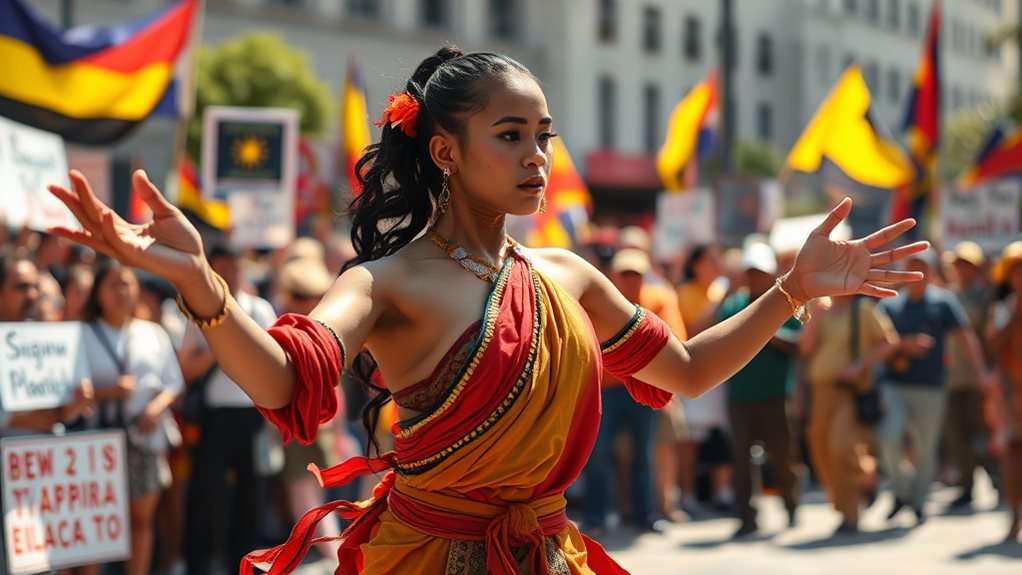
Filipino dance is deeply rooted in the nation's cultural heritage and plays a significant role in social and political action. This is evident in the way traditional dances are woven into protests, conveying messages of resistance and hope.
The national dance, tinikling, is a powerful symbol of resilience and cultural identity. Its rhythmic movements, which mimic the agility of birds escaping farmers' traps, are often performed during both celebrations and protests.
Other traditional dances, such as pangalay, aray, sakuting, and banga, are also integrated into these events, showcasing the rich diversity of Filipino dance.
The movements in these dances become a symbolic language, expressing historical narratives and social commentaries. For instance, a dance may embody resistance against colonial oppression or narrate the struggles of student activists against authoritarian rule.
The incorporation of traditional dances into protest performances is a strategic move to emphasize cultural identity and link contemporary struggles to a longer historical context.
Performing these dances is a powerful statement, reminding everyone of the nation's rich artistic legacy and its ongoing fight for justice. This engagement with dance traditions provides a platform for cultural storytelling, effectively transmitting messages of resistance and hope to both local and international audiences.
Historical Dance Influences
Dance in the Philippines is deeply rooted in its complex history, shaped by colonial encounters and periods of intense political upheaval.
The Spanish influence is evident in many folk traditions, a legacy of centuries of colonization. This influence not only introduced new dance forms but also shaped cultural expression through education and religious control. For example, the Tinikling, a traditional Filipino dance, is a fusion of Spanish and indigenous steps.
The American adaptation further complicated this landscape, blending modern and jazz styles with existing forms. This cultural hybridity is seen in dances like the Rigodon, which combines European and Filipino movements.
National dance companies, like the Bayanihan, aimed to standardize and promote Filipino national identity through dance. However, this process involved complexities such as:
- Standardization of folk dances led to homogenization, potentially erasing regional differences.
- Nostalgic focus on pre-colonial times overlooked ongoing struggles for self-determination.
- Performances could be used for both cultural preservation and political control.
Martial law under Marcos profoundly impacted Filipino dance. Contemporary expressions reflect this historical memory through performances that incorporate survivor testimonies and audio clips to convey the atrocities and resistance of that era.
For instance, the Karaniwang Tao dance company uses performances to raise awareness about human rights abuses during the Marcos regime. These performances serve as spaces for collective healing and grapple with the lasting impact of that brutal period.
Filipino dance constantly negotiates its place within the ongoing discourse of national identity and political protest. Through dance, Filipinos continue to express their struggles, resistances, and aspirations for a better future.
The Power of Movement
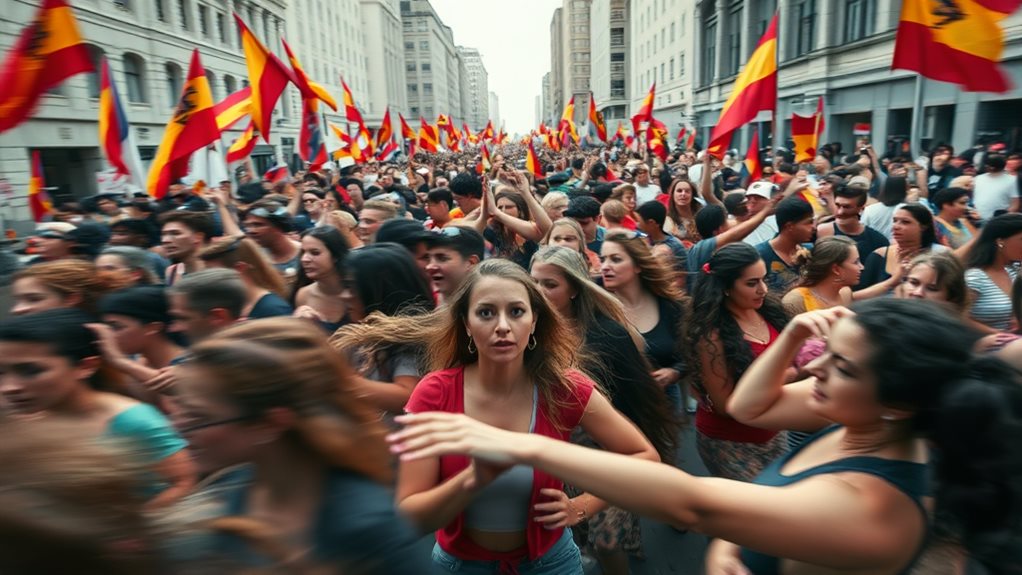
Movement is a powerful tool for social change in the Philippines. In barangays, hip-hop battles serve as platforms to challenge dominant narratives and express social concerns. For instance, expressive choreography conveys the horror of extrajudicial killings through movements that depict desperation, such as writhing, reaching, and huddling.
Collective action has the power to unite diverse groups. Events like "Freedom in Motion" bring together artists, community members, and public sector representatives to advocate for peace and social justice. Participatory dance experiments foster collaboration, community building, and civic engagement, promoting local sustainability.
Traditional dances can be infused with contemporary concerns. Dances like tinikling and pangalay provide potent commentary when combined with modern issues. For example, parody videos and skits satirize authoritarian regimes, highlighting historical and ongoing political struggles.
The absurdity of everyday life under dictatorship is rendered through disco rhythms, playfully subverting power.
Movement symbolism can influence mainstream culture. Regional dance crazes, such as budots, go viral, affecting mainstream culture and even political campaigns. Millions watch these performances online, and politicians themselves capitalize on movement's power, integrating dance into their campaigns.
Dance has become a significant cultural force in Filipino life.
Questions and Answers
What Legal Restrictions Affect Protest Dances?
Protest dance is legally restricted in various ways.
Permit requirements are one such restriction. In many places, organizers need permission from local authorities to hold protest dances. For example, in the United States, permits are often required for large gatherings, including dance protests.
Anti-terrorism laws also impact protest dance. Some governments use these laws to restrict or ban protests, including those that involve dance. For instance, in the UK, the Terrorism Act 2000 has been used to stop protests and gatherings, including those with a dance component.
Police actions can also limit protest dance. Law enforcement may disperse or arrest dancers, citing reasons like "disturbing the peace" or "obstruction." This can intimidate dancers and organizers, making them less likely to hold protests.
How Do Dancers Ensure Protest Safety?
To ensure protest safety, dancers strategize their choreography. They prioritize safety by selecting venues that are secure and accessible. For instance, they may choose indoor spaces with minimal obstacles and adequate exit routes.
Dancers also collaborate with community groups to amplify their message and build support. These partnerships help dancers stay informed about potential safety concerns and develop contingency plans.
Social media is utilized to promote the protest and raise awareness about the cause. By sharing details about the event, dancers can reach a broader audience and build a larger, more supportive community. This online presence also allows dancers to quickly disseminate important safety updates or changes to the protest plan.
What's the Role of Social Media in Dance Protests?
Social media plays a crucial role in dance protests by amplifying viral choreography and driving digital activism.
Through online sharing and engagement, social media platforms allow dancers to mobilize support and document events, broadening the reach of their message. For instance, the #MyBodyMyChoice dance protest against reproductive rights restrictions in the United States garnered widespread attention and support on social media platforms like Twitter and Instagram. By sharing videos and images of their performances, dancers can build a sense of community and solidarity, inspiring others to join the movement.
How Is Dance Protest Funding Secured?
Dance protest funding is secured through multiple sources. These sources include community groups, universities, and advocacy organizations. For instance, a local community group may provide funding for a dance protest that promotes social justice in their neighborhood. Universities may also provide funding for dance protests that align with their values or research initiatives. Additionally, advocacy organizations focused on specific causes, such as environmentalism or racial equality, may provide funding for dance protests that support their mission. Crowdfunding is another viable option, where individuals can contribute small amounts of money to support a dance protest. In some cases, limited government or corporate sponsorship opportunities may also be available, providing funding for dance protests that align with their interests or values.
Are There Counter-Protests to Dance Protests?
Counter-protests have been known to use state-sponsored cultural expression to undermine dance-based protests. These counter-protests directly challenge the narratives and impact of dance-based dissent by co-opting similar cultural symbols and expressions. For example, during a dance protest against government policies, a counter-protest might organize a similar dance performance, but with a pro-government message, to dilute the original protest's message.